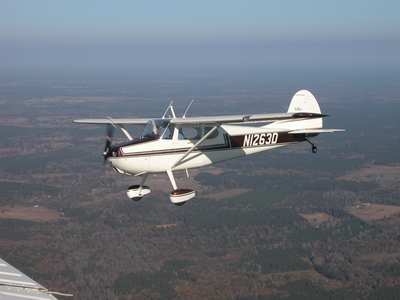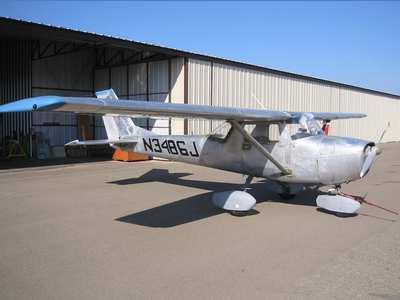Wed, May 23, 2012
Latest Effort Aimed At 100-Series Singles Produced Between 1946 And 1986
Cessna is building on a proactive safety initiative started in 2011 designed to educate single engine owner/operators on new inspection procedures. The latest effort is aimed at 100 series single-engine piston aircraft owners around the world, and informs them about new supplemental aircraft inspection procedures that will be added to 100 series Cessna service manuals. The supplemental inspections cover Cessna single-engine piston aircraft produced between 1946 and 1986.

"We've set up 40-hour training classes in Wichita for mechanics to be trained on the non-destructive inspection techniques, such as ultrasound and eddy current. These techniques will then be used to inspect high-time Cessna single engine airplanes. The intent is to not only teach them what they are looking for, but also how to identify issues that can occur more frequently with older, high-time airframes," said Tom Ronnau, Cessna's manager of Technical Service Propeller Products. "Owners are encouraged to make contact with their local Cessna service affiliate in order to schedule time to complete these mandatory inspections. The key with these inspections is to identify any serious corrosion or fatigue damage present, and if there is, get the airplane out of service and repaired."
The criteria for initial visual inspections will vary by model and aircraft age or hours of operation and will focus primarily on signs of corrosion or structural fatigue damage. Cessna authorized service providers will have special training and access to specific equipment for the inspections and for repairs, if required.
"Corrosion and fatigue are inevitable on any make and model of airframe with a high amount of hours. However, with early detection and proper maintenance, severity and effects can be minimized," said Beth Gamble, Cessna's principal airframe structure engineer. "The 100-series inspection requirements are very simple, and begin with a visual inspection that can be done quickly by a trained inspector during an annual inspection."
The inspection procedures are available at no cost on the customer access portion of the Customer Service page of Cessna.com. An interactive presentation is available on the customer access portion of the Customer Service page of Cessna.com and a short video explaining the inspection process is on Cessna's YouTube channel. (Photos from file)

More News
Aero Linx: Florida Antique Biplane Association "Biplanes.....outrageous fun since 1903." That quote really defines what the Florida Antique Biplane Association (FABA) is all about.>[...]
Beyond Visual Line Of Sight (BVLOS) The operation of a UAS beyond the visual capability of the flight crew members (i.e., remote pilot in command [RPIC], the person manipulating th>[...]
Also: ForeFlight Upgrades, Cicare USA, Vittorazi Engines, EarthX We have a number of late-breaking news highlights from the 2024 Innovation Preview... which was PACKED with real ne>[...]
“For Montaer Aircraft it is a very prudent move to incorporate such reliable institution as Ocala Aviation, with the background of decades in training experience and aviation>[...]
Maximum Authorized Altitude A published altitude representing the maximum usable altitude or flight level for an airspace structure or route segment. It is the highest altitude on >[...]
 ANN's Daily Aero-Linx (04.13.24)
ANN's Daily Aero-Linx (04.13.24) ANN's Daily Aero-Term (04.13.24): Beyond Visual Line Of Sight (BVLOS)
ANN's Daily Aero-Term (04.13.24): Beyond Visual Line Of Sight (BVLOS) Airborne 04.09.24: SnF24!, Piper-DeltaHawk!, Fisher Update, Junkers
Airborne 04.09.24: SnF24!, Piper-DeltaHawk!, Fisher Update, Junkers Aero-News: Quote of the Day (04.14.24)
Aero-News: Quote of the Day (04.14.24) ANN's Daily Aero-Term (04.14.24): Maximum Authorized Altitude
ANN's Daily Aero-Term (04.14.24): Maximum Authorized Altitude




